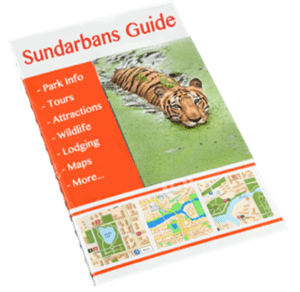Mongla Port & Visitor Center
The vast majority of visitors to the Sundarbans begin and end their journey in the Mongla Port, forming queues to wait for boats to take them to the Karamjal Visitor Center and back. This experience has the potential to be vastly improved for both visitors and businesses, transforming the Mongla port area into a vibrant cultural center filled with food stalls, souvenirs, and interpretive information for tourists while they wait to board their boat for the day. Currently, the area is mostly filled with parking for visitors, and there is a lack of signage or interpretation available for guests. Additionally, there is no system for day boats that wait for customers, with many undercutting prices in order to get the first customers. During the workshop with Mongla Boat Operators Association, many members noted that they wanted this system to be improved for more equitable sharing of customers; additionally, there is an opportunity for guides to join day tours to provide an enhanced experience for visitors in the region and alleviate challenges for boat operators wishing to provide information to their customers.
Karamjal Site Enhancements
With more than 150,000 visitors recorded in 2019, the Karamjal Ecotourism Center is a focal point of the tourism activity in the Sundarbans and is the most popular tourist destination in the SRF. Yet the center lacks interpretive guides, visitor information, and basic tourism services like food, crafts, and souvenirs…all of which enhance the visitor experience.
Interpretive Guides

Currently, a 1.5 km boardwalk that passes through mangroves and the captive animal breeding area. Well-trained interpretive guides would enrich the visitor experience by delivering insightful interpretive information about the site’s unique habitats while pointing out wildlife and other points of interest. Retired Forest Department officers and local “Village Tiger Response Team” members would make ideal guides with their existing knowledge of the forest and harrowing stories of tigers that are sure to enthrall and impress visitors.
The existence of upwards of 30+ trained interpretive guides would also exponentially increase the Forest Department’s on-site presence during the high season when as many as 8-10K visitors arrive per day in Karamjal. Although the guides would not be official park staff, they would be trained in monitoring/managing visitor behavior and would have to opportunity to reduce negative tourism impacts (e.g. wildlife harassment and littering) while providing an immersive and educational experience for visitors.
The guides would be professionally trained and certified and would also be organized as an association with regulations and bylaws to guide their activities and operations. The association would establish operational procedures that include a rotation system to designate when guides work, the costs and prices of tours, and requirements for quality and training.
Ecovillage Kiosk
Considering the number of visitors to Karamjal, establishing a Sundarbans “Ecovillage” sales kiosk that offers community-based tourism products and services at Karamjal would also have a significant positive economic impact on the SRF periphery communities.
Guided Tour Sales
The Karamjal Ecovillage kiosk would offer information on the guided tours of the mangrove trail, as well as serve as a sales office where a representative from the guide association would answer questions and sell tours.
Craft and Souvenir Sales

The Ecovillage kiosk would feature displays of the unique crafts produced by the Artisan Network – from woodcarvings and paintings to handmade textiles and pottery, all of which incorporate conservation themes designed to raise visitor awareness.
Interpretive Guides and Sundries
Additional products to offer at the Ecovillage kiosk include interpretive information about the SRF, such as visitor maps and wildlife guides, as well as sundries that a person might need while visiting the park such as camera batteries, repellant, and sunblock.
Interpretive Panels and Visitor Guidelines
An Ecovillage kiosk would also feature interpretive panels complementary to the information already offered by the Forest Department and the Wildlife Conservation Society Dolphin Interpretive Center at the site. In addition, the kiosk would be another opportunity to inform visitors about visitor “codes of conduct” while at Karamjal Visitor Center.
Sundarbans Visitor Guide and Interpretation Materials

Visitors to the Sundarbans today have the opportunity to explore one of the most unique natural and cultural areas on Earth, yet many are not aware of how special this area is due to a lack of visitor interpretation, guides, or signage. In order to support the best visitor experience possible, and ensure that guests are following proper protocol and know the required visitor behavior to enter the reserve, interpretive signage must be improved and act as a signal and source of information for visitors to the region. This signage can be improved at key points of entry, such as the Mongla Port, and Karamjal Visitor Center, and at key community access points such as Chandpai and Dhangmari. Enhanced visitor guides, such as those already produced by the local NGO Bangladesh Environment and Development Society (BEDS), can be distributed throughout visitor centers and on day trips, and on liveaboard boats for guests to read and observe during their journey. This will enhance the visitor experience and interpretive storytelling opportunities for guides who will have the opportunity to refer guests to the visitor guide to learn more about the rich history and culture of the Sundarbans region.



